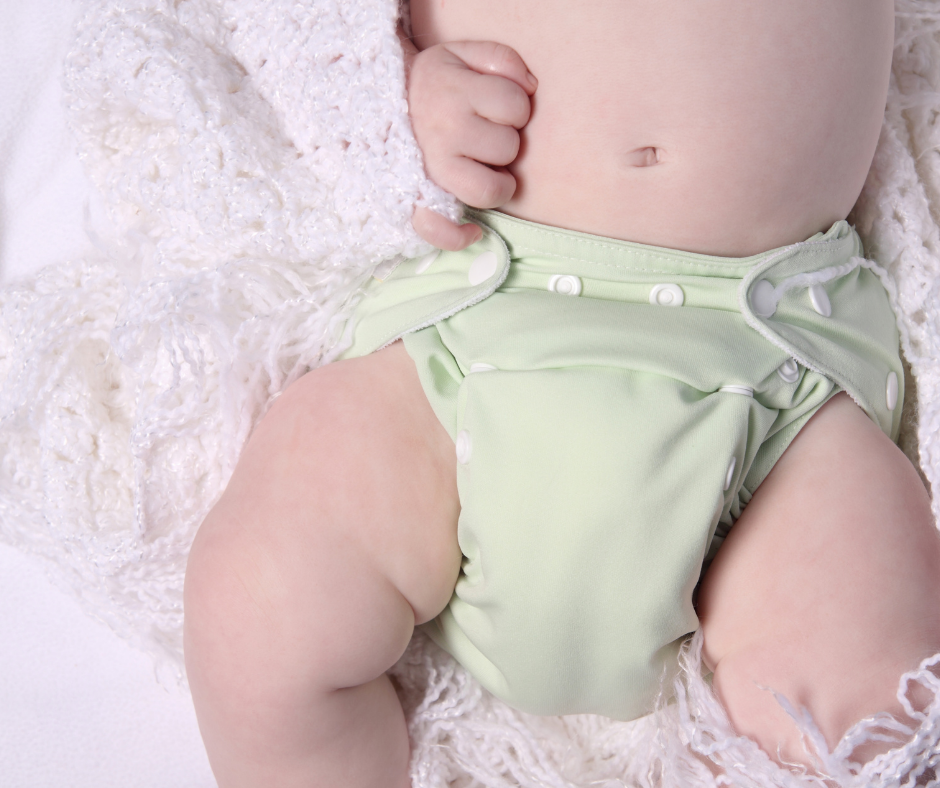What are the Pros and Cons of Cloth Diapering?
Decades ago, cloth diapering was the only way to diaper. Parents fumbled with the old-fashioned pins and white cloths that had to be folded and attached to a baby’s bottom. When disposable diapers were invented, they quickly became the standard diapering option. Now, cloth diapering has made a reappearance. Though modernized and made to be more convenient than in the past, this method of diapering is not for the faint of heart. It has its benefits, but also its drawbacks. If you’re curious not just about how to use cloth diapers but even whether to do so, read on for some pros and cons between cloth diapering and disposable diapers.
Cloth Diapering
Pros:
- Saves money. Cloth diapering comes in many different versions now; All-in-One, Pocket Diapers, Flats and Pre-folds, Fitted Diapers, and more. They can get expensive but even with all the accessories that are required for a lot of the cloth diapering systems, you’ll still come out on top. If you re-use them for multiple children, then you’ll save even more!
- Environmentally-friendly. Since cloth diapers are washed and re-used, they are kept out of the landfills. Unlike disposable diapers, cloth diapers are often just one-size after the newborn stage and can be used all the way through potty-training. There is much less trash generated when you don’t have a diaper pail to constantly empty out.
- Made of soft and gentle fabrics. Often, cloth diapers are made of soft fabrics. You can even find organic ones that are sure to be safe and comfortable for baby’s skin. Not only that, but you have a lot more design choices when it comes to diapering! Diaper covers come in all colors and patterns.
Cons:
- Washing diapers. Cloth diapers are reusable because you have to wash them. That’s right—even the poopy ones. If you’re easily flummoxed by toileting duties, then this will be a challenge. Once babies start eating solid food, poopy diapers will require that you first remove the stool and flush it down the toilet. (There are several products available that will make the process easier, including Bio-Liners and diaper sprayer options.)
- More laundry. Using cloth diapers will require lots of additional laundry. You won’t be able to mix your diaper loads with other loads so you’ll need to wash those separately. This means your washing machine will be going quite a lot with the extra laundry. Unfortunately, that also likely translates to a higher water bill.
- Not as absorbent. It is hard to get the same absorbency from a cloth diaper as from a disposable one. Even with special inserts and different kinds of cloth diapering systems, it’s hard to beat the disposable diaper. Modern disposable diapers are continually being improved to prevent leakage and increase absorbency.
Disposable Diapering
Pros:
- Without a doubt, disposable diapers are convenient. They are easy to put on, and easy to dispose of in a diaper bin. When you need to change a baby quickly, there are no accessories to fuss with which allows for quick diaper changes. Babies generally do not enjoy diaper changes so the quicker you can change a diaper, the better. They are also convenient to find; available at any drugstore, big box retailer, or supermarket.
- More breathable and absorbent. Disposable diapers can be more breathable than certain cloth diapers. They have become more absorbent and better designed over the decades, keeping kids and bedding dry throughout the day and night.
- Many sizing options. With lots of sizes to choose from, you can be sure that your baby is wearing a diaper that is comfortable, appropriately absorbent, and not bulkier than it needs to be. Whether you have a newborn or a crawler, there is a type and size of disposable diaper for your baby’s stage. There are also hypo-allergenic disposable options on the market now as well.
Cons:
- Contains chemicals. In order for a disposable diaper to do its job, it has to contain certain chemicals that help with absorbency to keep baby’s skin dry. Sometimes, a disposable diaper can be irritating to sensitive baby’s skin
- Harsher on the environment. Disposable diapers use up natural resources, like trees, during manufacturing. Billions of diapers then end up in landfills. When you take into account that a baby can use up to 2,200 diapers in its first year, then the impact of just one family’s disposable diaper use comes into focus.
- Can delay toilet training. Since disposable diapers are comfortable and absorbent, children do not always feel bothered when they’ve soiled their diaper. Though this is what we want to happen when they’re young, once they’re old enough to start potty-training, this can become a hindrance. Kids don’t feel the moisture, so they don’t feel the need to get out of their wet diaper. And that can lead to a delay in wanting to learn to use the bathroom.
Whether you are willing to learn how to use cloth diapers or not, you are bound to come across diaper rash at some point no matter which method you choose. Visit the Motherhood Center boutique to pick up a jar of diaper balm by Motherlove. Motherlove’s Organic Diaper Balm is an all-natural, plant-based formula that uses antifungal and antibacterial herbs. Free of petroleum, it does the job without leaving a greasy residue, making it also cloth diaper safe!
With pros and cons for each method, diapering, like many things in motherhood, comes down to personal preference. As long as you change a baby’s diaper when it is full, you’ll ensure their comfort. Don’t stress too much between the diapering options—you’ll find that there will be plenty of other big decisions you’ll have to make during these baby years!



